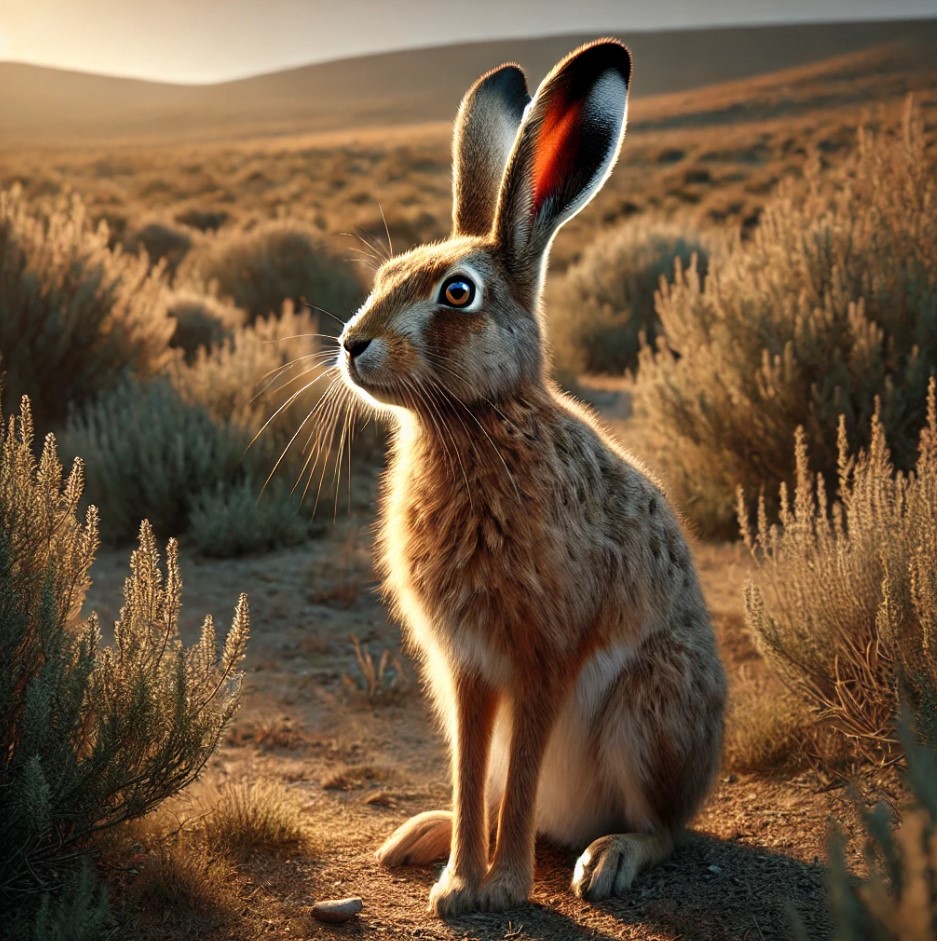Hares are small, nimble mammals known for their powerful hind legs and long ears. They are well-adapted to the diverse environments of Helerin, thriving in both wild and settled areas. As herbivores, hares play an important role in the archipelago’s ecosystems, feeding on grasses and plants while serving as prey for many larger predators. Hares are often associated with speed and agility, and they feature prominently in the folklore and symbolism of the islanders.
Physical Appearance
Hares have slender, muscular bodies with long hind legs, allowing them to sprint at remarkable speeds. Their fur varies in color depending on their habitat, ranging from tawny brown in open plains and grasslands to a mottled gray in rocky or forested regions. Hares also have long ears, which are sensitive to the slightest sounds, and large eyes positioned to detect predators from a distance. In colder environments, their fur thickens to provide warmth, while hares in more temperate climates have shorter, sleeker coats.
Habitat
Hares are highly adaptable and can be found across a range of environments in Helerin. They prefer open areas with plenty of low vegetation, such as grasslands, meadows, and plains, where they can spot predators from afar. However, they are also known to inhabit the edges of forests and woodlands, particularly near farmlands where they forage for crops. In hillier regions, hares are often seen along rocky slopes or scrub-covered hillsides, where they can use the terrain to their advantage for escape. While they are not typically found in swamps or dense forests, hares may venture into these areas when food is scarce.
Behaviour
Hares are solitary creatures for most of the year, though they come together during the breeding season, engaging in characteristic displays of boxing and chasing to establish dominance. They are crepuscular, meaning they are most active during dawn and dusk, when they venture out to feed on grasses, herbs, and shrubs. Hares rely on their speed and agility to evade predators, making sudden, unpredictable leaps to confuse their pursuers. They do not dig burrows like rabbits but instead create small depressions in the ground, called "forms," where they rest and remain hidden.
Geographic Distribution
Hares are widespread across the Helerin Archipelago. In Forbin, they thrive in the Amber Plains and along the edges of the Nythran Forest. In Teros, they are commonly found on the open Plains of Zarroth and the foothills of the Redpeak Mountains. In Remon, hares frequent the Stonelands and the farmlands surrounding Laknas. They are also present in the more arid environments of Mar Mabon and Mar Miskun, particularly along the edges of deserts and in scrublands. In the Seynan Islands, hares are found in the more temperate, grassy areas of the larger islands.
Interaction with People
Hares are hunted by the people of Helerin for both their meat and fur, though they are not considered a major food source. In rural areas, farmers sometimes view hares as pests, as they can damage crops and gardens. However, hares are also admired for their speed and agility, and they are often featured in local stories and folklore, symbolizing cleverness, swiftness, and the ability to escape danger. They are occasionally depicted in the carvings and tapestries of the archipelago’s temples, representing the fleeting nature of life and the importance of vigilance.




Comments